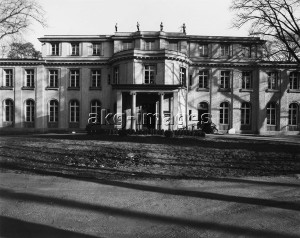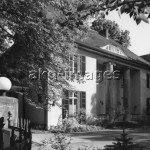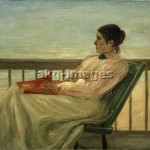The genteel West – more cultural adventures in Berlin
After my recent adventures in Berlin’s east, this weekend was all about the West, more precisely the very affluent area around the Wannsee. This part of the city has always been a very desirable and expensive area to live in, the beautiful tree-lined avenues boast some of the most amazing turn of the century villas. I decided to visit the villa of the German artist Max Liebermann, one of the most influential painters in Germany in the 19th century and head of the prestigious Berlin Academy until he resigned in disgust at the rise of the Nazis to power in 1933.
Liebermann was born into a wealthy Jewish Prussian family who had their home near the Brandenburg Gate; you really can’t get more central than that. His upbringing was very Prussian and his father never really understood his desire to become an artist. Struggling at school he was nevertheless accepted to the art academy in Weimar and his first major work – The geese pluckers – became much talked about if entirely for the wrong reason. The subject was derided but his skills highly praised. Liebermann was undeterred: he went to France to study the Realists such as Millet whose peasant subjects he tried to emulate and he spent much time in the Low Countries where he found much to paint, agricultural workers, lace makers or spinners.
Liebermann became successful as a portrait painter as well and pretty much all of Berlin’s high society was queuing up to be painted by the master. By 1909 he had earned enough money to buy land near the Wannsee and build a summer house for himself and his family. They spent much time there and his family, the garden and the surrounding area became some of his favourite subjects. The birch trees you can see in the first painting are still there!
Liebermann died in 1935 and luckily didn’t experience all of the terror the Nazis inflicted but his widow did: the house was confiscated in 1940 and under the threat of deportation she killed herself in 1943. The house was used by various organisations, including a diving club and has been a museum since 2006 with some of the garden already restored. It is a beautiful, inspiring and calming place to visit.
Berlin is a city of contrast, however, and less than a kilometre away we found ourselves in front of the House of the Wannsee Conference. The genteel world of Liebermann clashed with the place where the most terrible crime of the 20th century was planned, the so-called Final Solution. I have to admit that we didn’t stay very long, only catching a glimpse of a fantastic permanent exhibition inside the house. I will have to go back and report another time!

Photo, akg-images (Dieter Hoppe)








